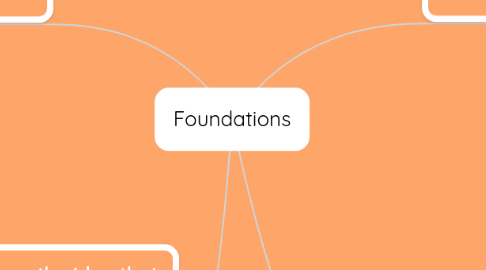
1. Copyright - the right of an owner/creator of a work to determine whether others are allowed to use their work
1.1. Fair Use - allows people to use copyrigthed material for specific reasons without receiving permission from the creator/owner
1.1.1. 1. The purpose for the use
1.1.2. 2. The Nature of the copyrighted work
1.1.3. 3. The amount and sustainability of the work taken
1.1.4. 4. The effect of the use on the potential market
1.2. Copyright Infringement - when a person distributes a copyrighted work without the permission of the creator/owner
1.3. Plagiarism - passing off someone else's work as your own (even unintentionally)
2. Universal Design - the idea that products/environments should be accessible to all people without the need for adaptation
2.1. Multiple Means of Engagement - allows students to heighten their interest and effort (ex. using technology in the classroom to engage students)
2.2. Multiple Means of Representation - allows each student to grasp the concept in the way they learn best (ex. kinesthetic learners would probably learn best by holding 3 blocks in their hands, whereas visual learners would probably just need to see 3 tally marks on the board
2.3. Multiple Means of Expression - allows students to express their knowledge through the assessment type that works best for them (ex. tests, projects, in-class participation)
3. The 4 Factors Used to Judge Fair Use
4. Theoretical Foundations
4.1. Behaviorism - a theory of human/animal learning that focuses solely on observable or detectable behavior
4.2. Constructivism - a learning philosophy based on the idea that thinking about our own experiences helps us to understand the world we live in
4.2.1. Inquiry-Based Learning - a type of learning where students come together to decide on a testable question, make predictions about it, gather materials, experiment and observe, record the data, confirm or deny their hypothesis, and share their results
4.2.1.1. This type of learning is based on the scientific method
4.2.2. Project-Based Learning - a hands-on student-directed activity where students create something that demonstrates what they have learned
4.2.2.1. Students are able to build skills (collaborating, public speaking, critical thinking, communication, etc.)
4.2.2.2. There is an increase in academic achievement, application, retention, motivation, and engagement
5. Digital Citizenship - using technology to improve your online environment
5.1. The 9 Elements of Digital Citizenship
5.1.1. 1. Digital Access - providing accessible options for technology and online resources
5.1.2. 2. Digital Commerce - the buying, selling, and using money electronically and the protection in place to do so
5.1.3. 3. Digital Communication & Collaboration - the digital exchange of information
5.1.4. 4. Digital Etiquette - the code of conduct for respecting others while using digital devices
5.1.5. 5. Digital Fluency - the process of understanding technology and how to use it
5.1.6. 6. Digital Health & Welfare - the physical and mental/psychological well-being in the digital world
5.1.7. 7. Digital Law - refers to the creation of the online rules and policies
5.1.8. 8. Digital Rights & Responsibility - the benefits and requirements given to everyone in the digital world
5.1.9. 9. Digital Security & Privacy - the digital safeguards to protect devices against viruses and attacks

